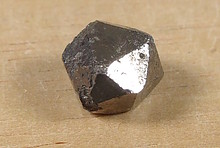Home PageAbout MindatThe Mindat ManualHistory of MindatCopyright StatusWho We AreContact UsAdvertise on Mindat
Donate to MindatCorporate SponsorshipSponsor a PageSponsored PagesMindat AdvertisersAdvertise on Mindat
Learning CenterWhat is a mineral?The most common minerals on earthInformation for EducatorsMindat ArticlesThe ElementsThe Rock H. Currier Digital LibraryGeologic Time
Minerals by PropertiesMinerals by ChemistryAdvanced Locality SearchRandom MineralRandom LocalitySearch by minIDLocalities Near MeSearch ArticlesSearch GlossaryMore Search Options
The Mindat ManualAdd a New PhotoRate PhotosLocality Edit ReportCoordinate Completion ReportAdd Glossary Item
Mining CompaniesStatisticsUsersMineral MuseumsClubs & OrganizationsMineral Shows & EventsThe Mindat DirectoryDevice SettingsThe Mineral Quiz
Photo SearchPhoto GalleriesSearch by ColorNew Photos TodayNew Photos YesterdayMembers' Photo GalleriesPast Photo of the Day GalleryPhotography
╳Discussions
💬 Home🔎 Search📅 LatestGroups
EducationOpen discussion area.Fakes & FraudsOpen discussion area.Field CollectingOpen discussion area.FossilsOpen discussion area.Gems and GemologyOpen discussion area.GeneralOpen discussion area.How to ContributeOpen discussion area.Identity HelpOpen discussion area.Improving Mindat.orgOpen discussion area.LocalitiesOpen discussion area.Lost and Stolen SpecimensOpen discussion area.MarketplaceOpen discussion area.MeteoritesOpen discussion area.Mindat ProductsOpen discussion area.Mineral ExchangesOpen discussion area.Mineral PhotographyOpen discussion area.Mineral ShowsOpen discussion area.Mineralogical ClassificationOpen discussion area.Mineralogy CourseOpen discussion area.MineralsOpen discussion area.Minerals and MuseumsOpen discussion area.PhotosOpen discussion area.Techniques for CollectorsOpen discussion area.The Rock H. Currier Digital LibraryOpen discussion area.UV MineralsOpen discussion area.Recent Images in Discussions
Mineralogical ClassificationCrystal structure of nickelskutterudite (with revised formula)
5th Jan 2017 09:34 UTCMarco E. Ciriotti Manager
▪ Schumer, B.N., Andrade, M.B., Evans, S.H., Downs, R.T. (2017): The crystal structure of nickelskutterudite, (Ni,Co,Fe)As3, and occupancy of the icosahedral cation site in the skutterudite group. American Mineralogist, 102, 205-209.
Abstract:
We propose a new formula for the mineral nickelskutterudite, based on our observation that either (or both) Co or Fe3+ are essential structure constituents. The crystal structure of nickelskutterudite, (Ni,Co,Fe) As3, cubic, Embedded Image , Z = 8: a = 8.2653(6) Å, V = 564.65(7) Å3, has been refined to R1 = 1.4% for 225 unique reflections I > 2σ(I) collected on a Bruker X8 four-circle diffractometer equipped with fine-focus, sealed tube MoKα radiation and an APEX-II CCD detector. This is the first report of the crystal structure of nickelskutterudite. Nickelskutterudite, a member of the skutterudite group of isostructural minerals, adopts a distorted perovskite structure with notably tilted octahedra and an unoccupied to partially occupied icosahedral metal site. In the structure of nickelskutterudite, there is one metal (B) site occupied by Ni, Co, or Fe in octahedral coordination with six As atoms. Procrystal electron density analysis shows each As anion is bonded to two cations and two As anions, resulting in a four-membered ring of bonded As with edges 2.547 and 2.475 Å. The extreme tilting of BAs6 octahedra is likely a consequence of the As-As bonding. The nickelskutterudite structure differs from the ideal perovskite structure (A4B4X12) in that As4 anion rings occupy three of the four icosahedral cages centered on the A sites. There are reported synthetic phases isomorphous with skutterudite with the other A site completely occupied by a cation (AB4X12).
Electron microprobe analyses of nickelskutterudite gave an empirical chemical formula of (Ni0.62Co0.28Fe0.12)Σ1.02(As2.95S0.05)Σ3.00 normalized to three anions. Pure NiAs3 nickelskutterudite, natural or synthesized, has not been reported. In nature, nickelskutterudite is always observed with significant Co and Fe, reportedly because all non-bonded valence electrons must be spin-paired. This suggests that nickelskutterudite must contain Co3+ and Fe2+, consistent with previous models since Ni4+ cannot spin-pair its seven non-bonded electrons, Co3+ and Fe2+, which can spin-pair all non-bonded electrons, are required to stabilize the structure. No anion deficiencies were found in the course of this study so, including the structurally necessary Co and Fe, the chemical formula of nickelskutterudite (currently given as NiAs3−x by the IMA) should be considered (Ni,Co,Fe)As3.




Mindat.org is an outreach project of the Hudson Institute of Mineralogy, a 501(c)(3) not-for-profit organization.
Copyright © mindat.org and the Hudson Institute of Mineralogy 1993-2024, except where stated. Most political location boundaries are © OpenStreetMap contributors. Mindat.org relies on the contributions of thousands of members and supporters. Founded in 2000 by Jolyon Ralph.
Privacy Policy - Terms & Conditions - Contact Us / DMCA issues - Report a bug/vulnerability Current server date and time: April 27, 2024 00:39:47
Copyright © mindat.org and the Hudson Institute of Mineralogy 1993-2024, except where stated. Most political location boundaries are © OpenStreetMap contributors. Mindat.org relies on the contributions of thousands of members and supporters. Founded in 2000 by Jolyon Ralph.
Privacy Policy - Terms & Conditions - Contact Us / DMCA issues - Report a bug/vulnerability Current server date and time: April 27, 2024 00:39:47











